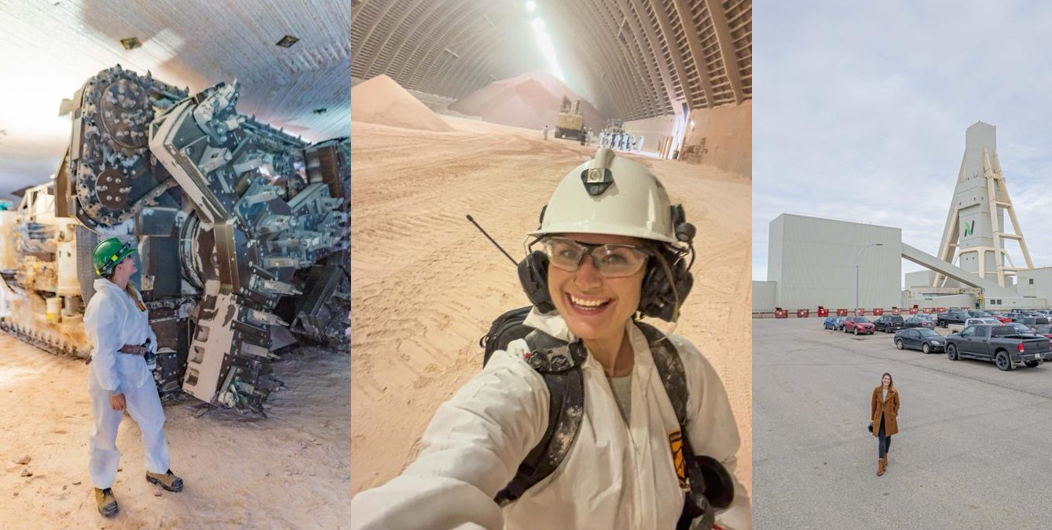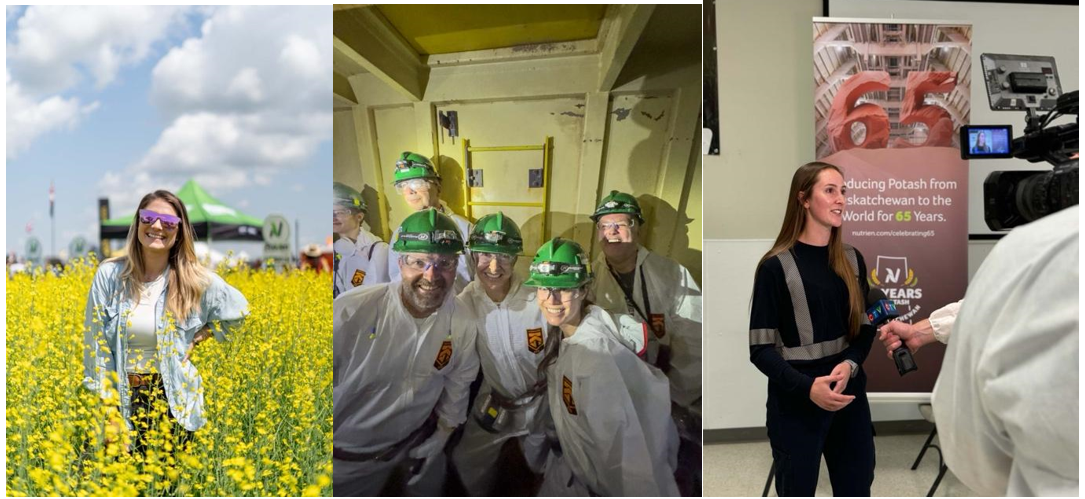
A 6-Month Adventure Learning About the Role Nutrien Plays in Feeding the Future
If you’re from Saskatchewan, you’ve probably heard of Ashlyn George. She’s a local adventurer with deep roots in the province, known for her passion for exploration and ability to showcase the land's beauty. Through her platform, “The Lost Girl’s Guide to Finding the World,” Ashlyn shares her unique perspective on the province, from its breathtaking landscapes to the industries that make Saskatchewan tick.
Ashlyn’s connection to both agriculture and mining is deeply personal. Her family has ties to both, making her a natural storyteller and someone who understands the importance of these industries firsthand. We are proud to partner with her to bring a fresh perspective on potash and agriculture to a broader audience. Read Ashlyn’s article below, which originally appeared on The Lost Girl's Guide to Finding the World.
The people and the businesses that operate in Saskatchewan have deep roots.
In celebration of Nutrien’s 65 years of potash production, I’ve been following the path of how we get food to our table – from going underground in a potash mine to visiting a seed breeding facility.
The work Nutrien does not only impacts my personal life, but the community I live in, this country, and around the world.

Inside the greenhouse on campus at the University of Saskatchewan at Nutrien’s seed breeding facility.
Learning About Seed Breeding
My dad has been a grain farmer in Saskatchewan for 50 years. I grew up learning about planting and harvesting crops that provide for a global population. I know the hard work, dedication, knowledge, and innovation that goes into balancing sustainability and increased food production.
On my visit to Nutrien’s Canola Breeding Facility here in Saskatoon, I learned more about what it takes to develop seeds that produce a high yield crop.

Thanks to a tour from Zoe Ehlert, the on-site manager at Nutrien’s seed breeding facility, we dove deep into details on plant genetics, DNA sequencing, and breeding.
What I was more surprised to learn is that plant breeding scientists have to think about challenges 10 years in the future. This isn’t easy considering a seed has to withstand unknown weather events, changing soil health, and remain disease resistant while growing strong and healthy. In the lab, thousands of plants are DNA tested and analyzed with only the best going to test plots in the field.
The team of people I met who make this all happen are incredibly passionate about ensuring food security for future generations.

Above ground at Nutrien’s Allan potash mine, located 60 kilometres southwest of Saskatoon
How Potash Helps
Nutrien is the largest potash producer in the world and the only Canadian company producing this mineral at its six mines across the province of Saskatchewan.
Potash, which is mined underground, is used as a fertilizer and directly translates to helping plants and crops grow better.

Two Nutrien employees watch potash get hauled away on a conveyor belt.
What it’s Like 1 Kilometre Under the Earth’s Surface
My partner Aaron is employed at a Nutrien mine site. He currently contributes to a tele-remote autonomous feature that increases productivity and creates a safer environment for everyone working alongside him.
My underground visit to the Allan Potash Mine allowed me to understand more of what Aaron’s day-to-day life is like underground. It also allowed me to connect the dots in the cycle of food production and each step that contributes to it.
Travelling one kilometre under the earth’s surface in an elevator nicknamed “the cage,” I discovered that it’s a whole other world down there!
There are roads, vehicles, workstations, offices - and yes - there’s even Wi-Fi! It’s like a small town. It’s always a balmy 27 degrees Celsius too.

Ashlyn underground next to the boring machine, inside a potash storage facility, and aboveground in front of Nutrien’s mainframe.
The mining face is beautiful – a giant boring machine cuts into the red and white seam and creates uniform circles in the potash. Not only did we get to see it all, but we also got to touch raw potash ore.
From underground, the potash gets taken to the surface and goes through a multi-step process in the mill.
Fun Fact: Nutrien’s first shipment of 1,000 tonnes of potash came from Patience Lake in 1959 – 65 years ago!
Next, the potash is processed and loaded onto railcars for transportation across the world to be used as fertilizer on crops in 40 countries.
It was fascinating to see the experienced team of people involved in potash mining and how our resources here in Saskatchewan are so important globally.

Nutrien directly employs 4,200 people within the province, supports an inclusive and diverse workplace, and has over 280 community partners.
Feeding the Future
The work Nutrien does matters. I see it at a grassroots level in my own life and across Saskatchewan. On a global scale, Nutrien serves the needs of 600,000 farmers on three continents. These conversations and actions result in the kind of impact that will make a difference for our planet and future generations to come.
It makes you proud to be from Saskatchewan and Canada, doesn’t it?
Happy 65th Nutrien!
Related stories


